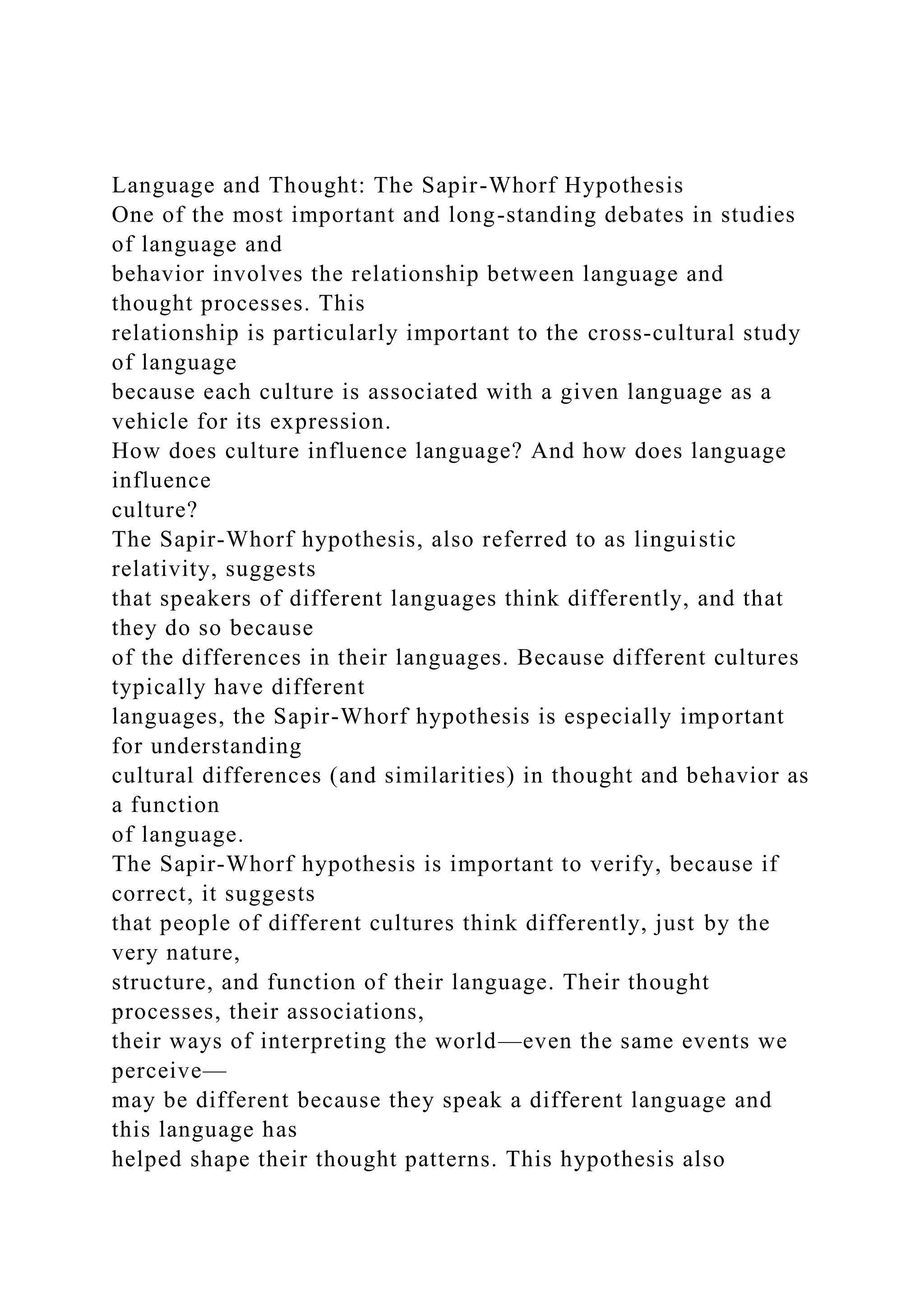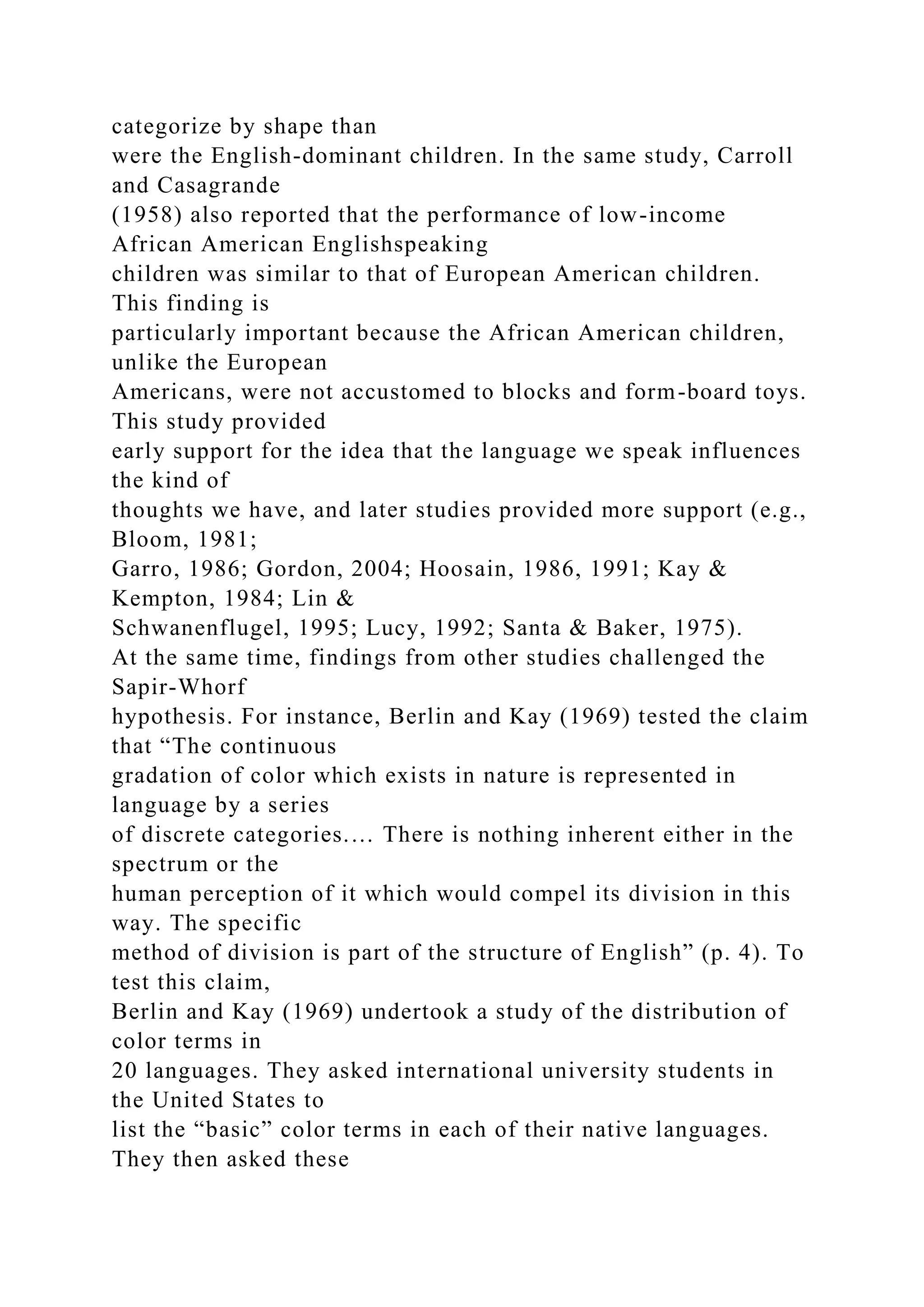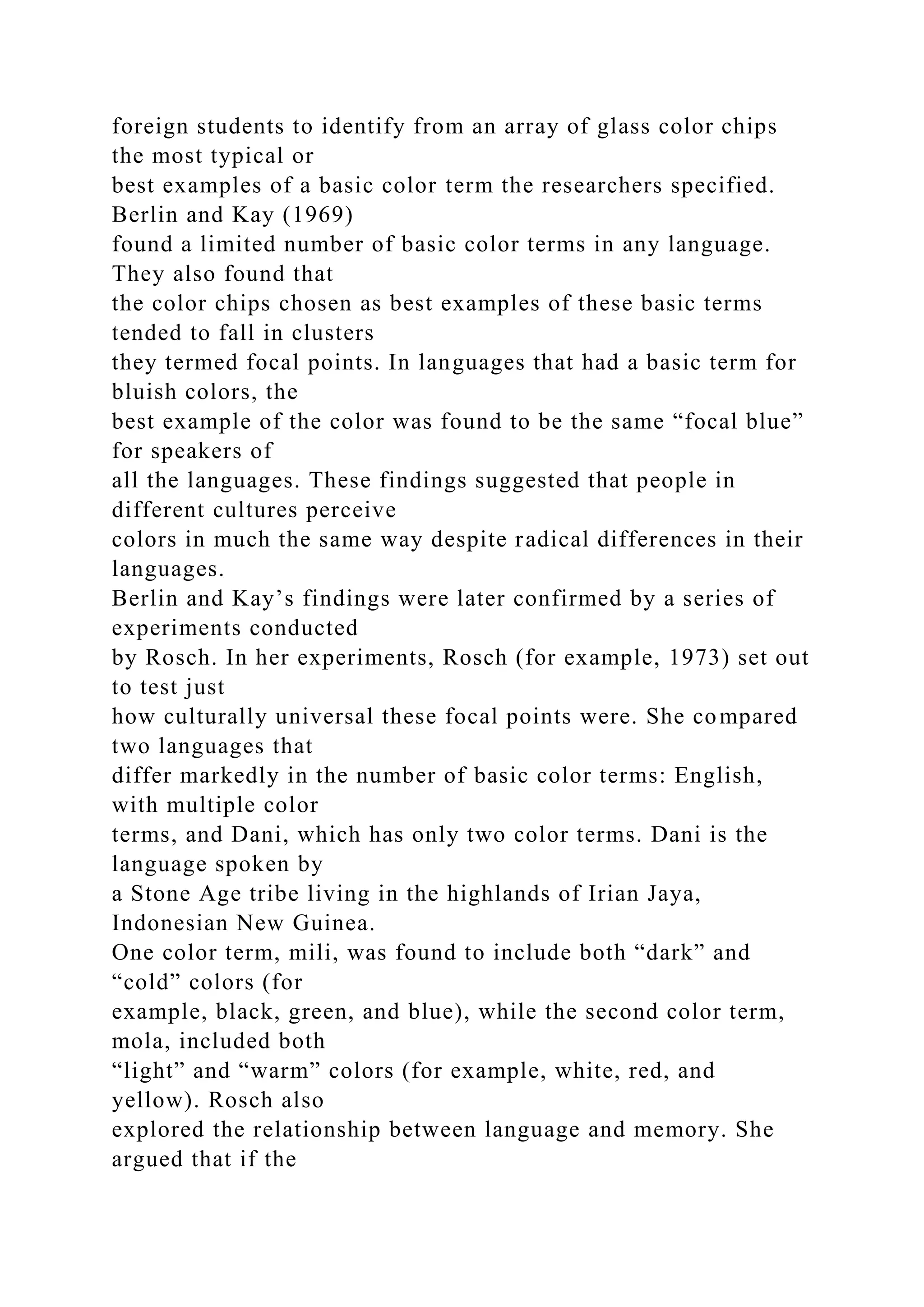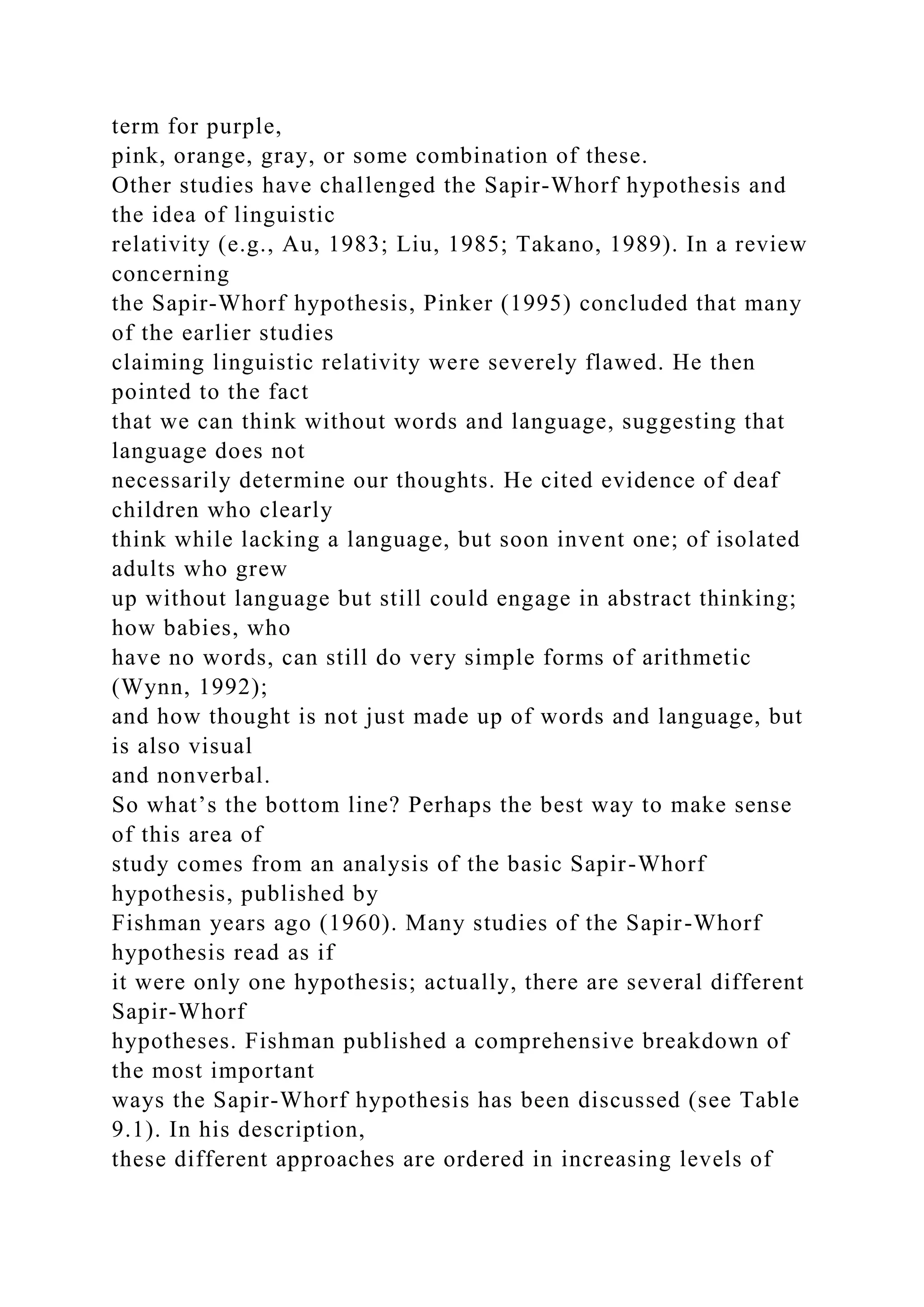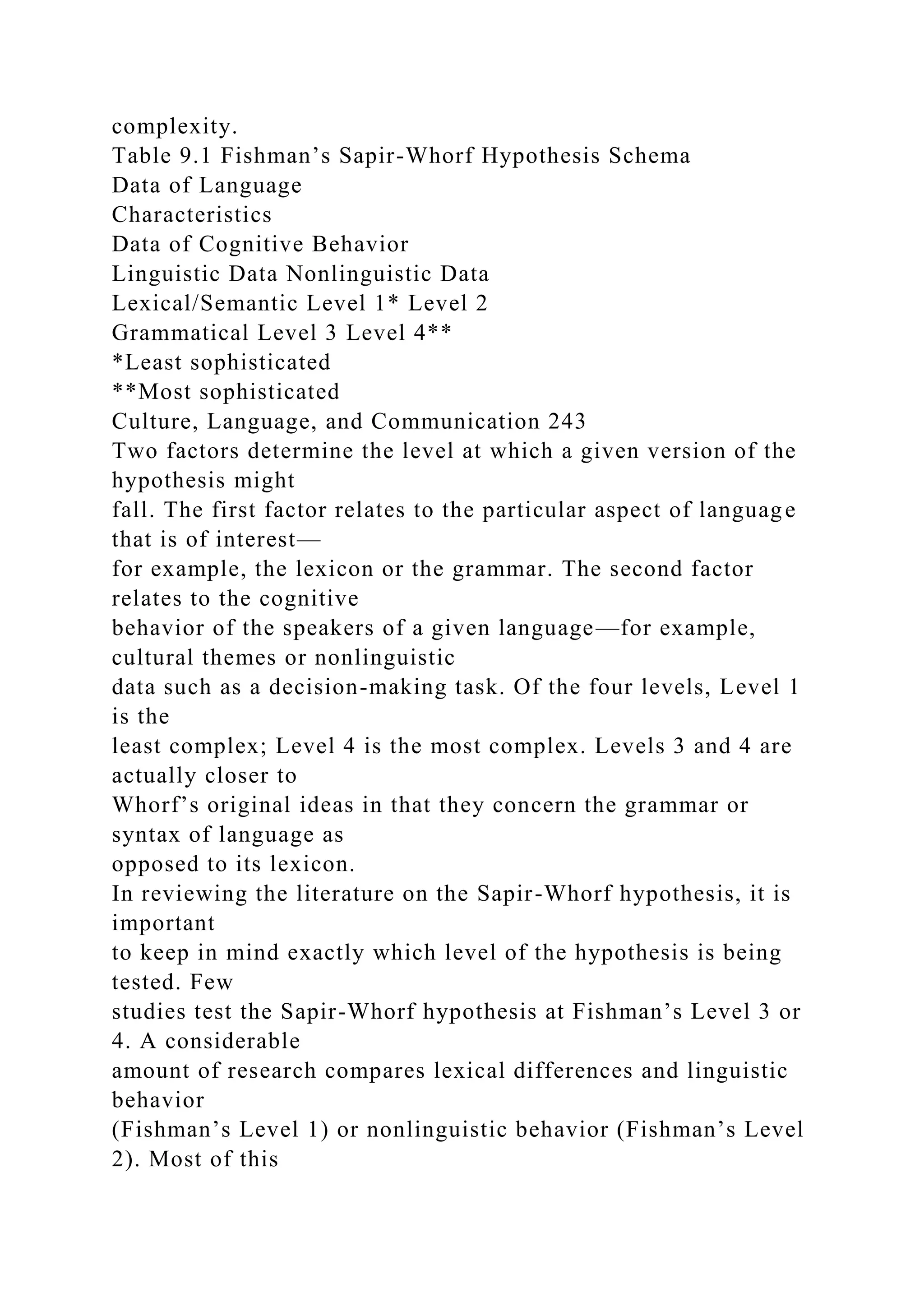The Sapir-Whorf hypothesis posits that language influences thought processes and perception of the world, suggesting that speakers of different languages have distinct ways of thinking. Numerous studies, such as those comparing Navajo and English speakers, indicate that linguistic structures can affect cognitive classification, but other research challenges this by showing universal perceptions across languages, particularly in areas like color categorization. The ongoing debate highlights varying levels of complexity in understanding the relationship between language and cognition, with some evidence supporting linguistic influence on cognition, especially in grammatical structures.
